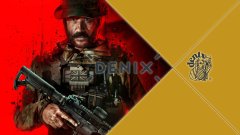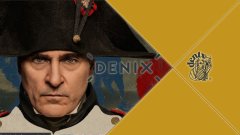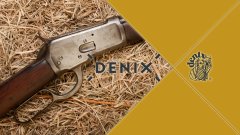Guns and their history: The most powerful weapons of the NAPOLEON BONAPARTE's army

Guns and their history: The most powerful weapons of the NAPOLEON BONAPARTE's army
Napoleon Bonaparte is known as one of the greatest imperialist symbols in the entire history of Europe. His fame emerged during the French Revolution, first as consul and then as emperor, demonstrating his great skills as a strategist, expanding his empire thanks to the Napoleonic Wars, winning the Battle of Eylau and The Battle of Dresden, among many others.
Having said this, and without underestimating the great emperor as the protagonist of the Napoleonic Wars, these could not have been carried out without La Grande Armée and the revolutionary artillery that the army carried with it.
La Grande Armée (also known as the Imperial French Army) was the name Napoleon gave his army at the gathering of troops held at Boulogne-sur-Mer with the aim of invading England. Unable to mobilize such an army to the British Isles, Napoleon managed to muster a total of 600,000 soldiers (plus a million in reserve) to contain Austrian and Russian to invade France.
As a former artillery officer, Napoleon was expected to arm his land army with cannon in a defensive manner, preventing direct action by infantry and cavalry. Although cannons were the most versatile weapon in the Napoleonic Wars, Emperor Bonaparte armed his entire army with a variety of innovative rifles, pistols, sabers, and axes that, like their tactical skills, would go down in French, European and global history.
FIREARMS
1.1 Rifle with Bayonet
1.2 Flintlock rifle
1.3 Flintlock carbine
1.4 Cavalry pistol
1.5 Double-barreled pistol
EDGE WEAPONS
2.1 Briquet saber
HEAVY ARTILLERY
3.1 Napoleonic cannon
FIREARMS |
Rifle with Bayonet
This type of weapon required manual reloading of its ammunition after each shot. Although they could be more accurate than pistols and gave a longer effective range, the trajectory of the bullet was imprecise and proper aiming was impossible during combat.
Flintlock rifle
Like the rest of the rifles, they had a flint or flint stone, which when the hammer was activated produced the spark that ignited the gunpowder. The ammunition, which was inserted through the muzzle of the cannon, consisted of gunpowder, a projectile, and a wad of paper, which served as a stopper to keep the previous two compressed inside the cannon.
Flintlock carbine
The flintlock carbines had a flint or flint stone, which when the hammer was activated produced the spark that ignited the gunpowder. These types of weapons required manual reloading of their ammunition after each shot. Like the rifles, the trajectory of the bullet was imprecise.
Cavalry pistol
These pistols were used as self-defense weapons until the mid-19th century. Their effective range was short, and they were frequently used as an adjunct to a sword or knife. These weapons were used for a single shot, since the reloading method was very slow and there was usually no time to reload it.
Two-barrel pistol
This 2-barrel pistol was manufactured in St. Etienne by Nicolas - Noël Boutet in 1806 by express order of Emperor Napoleon I, and bears his insignia on the grip. Napoleon used it as a travel pistol and, being a double barrel, it provided a clear advantage against his opponents, due to the slow reloading process of the other flintlock pistols of the time.
EDGE WEAPONS |
Briquet Saber
The Briquet saber is a curved, single-edged sword, designed to cut, commonly used by cavalry and by Napoleonic infantry and naval officers.
It arose from the need for speed in combat, which is achieved by cutting and not leaving the blade of the weapon embedded in the opponent's body thanks to the curvature of the edge.
HEAVY ARTILLERY |
Napoleonic cannon
In 1776, Jean-Baptiste Vaquette de Gribeauval, a mathematician, engineer and artilleryman, managed to get his reform of French artillery approved, turning the cannon into the most important and decisive weapon in the campaigns of the armies of the Revolution and of Napoleon Bonaparte.
Without a doubt, Napoleon Bonaparte is one of the best-known historical figures. Insightful, hardworking and revolutionary, he marked a before and after not only in his country, completely decentralized as a result of the French Revolution, but throughout Europe, leaving behind him a historical legacy of incalculable value.
At DENIX we have a wide variety of replicas of the most famous Napoleonic weapons. Visit our CATALOG and feel like a true protagonist of the Napoleonic conquests.










